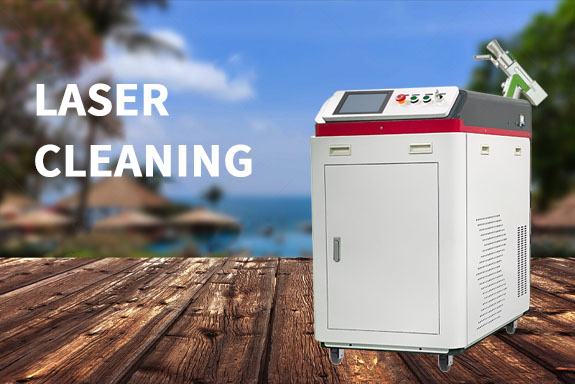CO2 laser etching has revolutionized the way we mark and customize a wide range of materials. This technology utilizes carbon dioxide lasers to etch intricate designs, text, and patterns onto various surfaces with remarkable precision. In this article, we will explore the capabilities and applications of CO2 laser etching, focusing on how this technology is used with different materials, including wood, through the lens of laser marking machines for wood.
Understanding CO2 Laser Etching
CO2 laser etching involves the use of a CO2 laser, which operates at a wavelength of 10.6 micrometers. This type of laser is highly effective for etching and engraving on a diverse range of materials. The process works by directing a focused laser beam onto the surface of the material, causing it to either vaporize or undergo a chemical reaction that creates a permanent mark. CO2 laser etching is valued for its precision and the ability to produce detailed and intricate designs.
Applications of CO2 Laser Etching on Different Materials
CO2 laser etching is versatile and can be applied to various materials. Here, we’ll discuss how CO2 laser etching interacts with several common materials, including wood, and the benefits of using a laser marking machine for wood.
Wood
CO2 laser etching is particularly effective for marking and engraving wood. When using a laser marking machine for wood, the laser beam precisely burns the wood’s surface, creating detailed designs and patterns. This method is ideal for crafting custom engravings on wooden items such as plaques, coasters, and decorative pieces. The ability to achieve high contrast on wood surfaces ensures that the engraved text and designs are both clear and visually appealing. Additionally, CO2 laser etching can handle various wood types, from softwoods like pine to hardwoods like oak.
Acrylic
Acrylic is another material that benefits greatly from CO2 laser etching. The process creates clean, smooth cuts and engravings on acrylic surfaces, making it perfect for producing signage, awards, and custom gifts. CO2 lasers can etch intricate designs onto acrylic sheets, which then stand out with a frosted or matte finish, depending on the depth of the etching. The precision of CO2 laser etching allows for detailed and accurate work, which is particularly useful in applications requiring high levels of customization.
Glass
CO2 laser etching is also effective for marking glass. The laser beam interacts with the surface of the glass, creating fine, permanent engravings that are often used for personalizing glassware, trophies, and decorative items. Unlike traditional methods, CO2 laser etching on glass does not require physical contact with the material, reducing the risk of damage. The result is a crisp and clear etching that can range from simple text to complex patterns.
Leather
Leather is another material that benefits from CO2 laser etching. The laser can engrave designs onto leather surfaces with precision, creating custom patterns for items such as wallets, belts, and bags. CO2 laser etching on leather produces high-quality results, with the ability to create intricate details and personalized messages. The process can handle various leather types, including genuine leather and synthetic alternatives, making it versatile for different applications.
Metal
While CO2 lasers are not as commonly used for metals as other types of lasers, they can still effectively mark certain types of metal surfaces. For metals that can be marked by CO2 lasers, such as anodized aluminum, the process creates clear and durable engravings. The high precision of CO2 laser etching ensures that text and designs are sharp and legible. However, for more reflective or harder metals, other types of lasers, such as fiber lasers, might be more appropriate.
Benefits of Using a CO2 Laser Marking Machine for Wood
A CO2 laser marking machine designed for wood offers several benefits that enhance the etching process:
- Precision and Detail: The high accuracy of CO2 lasers allows for intricate designs and detailed engravings on wooden surfaces.
- Speed and Efficiency: CO2 laser marking machines can complete tasks quickly, making them suitable for both small and large production runs.
- Customization: The ability to easily adjust settings and designs allows for extensive customization, whether creating one-of-a-kind items or personalized gifts.
- Minimal Waste: CO2 laser etching produces minimal waste as the process is highly controlled and only removes the material that needs to be engraved.
How to Choose a CO2 Laser Marking Machine for Wood
When selecting a CO2 laser marking machine for wood, consider the following factors:
- Laser Power: The power of the laser will affect the depth and speed of the etching. Higher power lasers can handle thicker and denser wood materials.
- Work Area Size: Ensure that the machine has a work area large enough to accommodate your projects.
- Precision and Control: Look for machines with high precision and control settings to achieve the best results for intricate designs.
- Software Compatibility: Choose a machine that is compatible with your design software to streamline the engraving process.
Conclusion
CO2 laser etching is a versatile and precise technology that is widely used for marking and engraving a variety of materials, including wood, acrylic, glass, leather, and some metals. The technology’s ability to create detailed and permanent marks makes it ideal for applications ranging from custom gifts to industrial parts. Using a CO2 laser marking machine for wood provides exceptional results, with benefits such as precision, efficiency, and customization. By understanding the capabilities and applications of CO2 laser etching, businesses and hobbyists can make informed decisions about incorporating this technology into their projects.
由用户整理投稿发布,不代表本站观点及立场,仅供交流学习之用,如涉及版权等问题,请随时联系我们(yangmei@bjjcz.com),我们将在第一时间给予处理。







